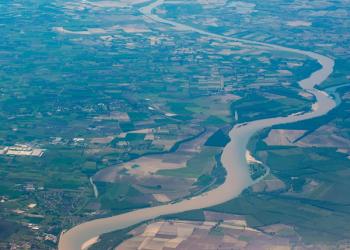
- Spectroscopy-01-01-2017
- Volume 32
- Issue 1
Book Review: The Concise Handbook of Analytical Spectroscopy Theory, Applications, and Reference Materials
Heinz W. Siesler, Emeritus Professor at University of Duisburg-Essen, reviews Jerry Workman’s new book, The Concise Handbook of Analytical Spectroscopy Theory, Applications, and Reference Materials
Heinz W. Siesler, Emeritus Professor at University of Duisburg-Essen, reviews Jerry Workman’s new book, The Concise Handbook of Analytical Spectroscopy Theory, Applications, and Reference Materials
Getting straight to the point: This handbook will not only become a standard work on the shelves of university and industrial libraries, but it will also become a routine reference source of knowledge on the desks of scientists involved in analytical spectroscopy.
The handbook consists of five volumes that provide an extremely detailed overview of the theoretical principles, state-of-the-art instrumentation and its operation, data acquisition, data evaluation, and practical applications of electronic and vibrational spectroscopy (ultraviolet, visible, near-infrared, mid-infrared, and Raman spectroscopy). Because the individual volumes are also intended as stand-alone books for analysts working with the specific technique, certain parts of the text (for example, theoretical introduction and spectra evaluation techniques) are inevitably repetitions; however, this structure provides the benefit that the necessity for referral to the other volumes is kept to a minimum.
Generally, the outstanding advantage of this handbook is the wealth of information provided in addition to the key topics regarding the described technique. Whether it is historic developments, important literature references, band assignments, modern evaluation algorithms, characteristic curves, or specific reference materials, everything is compactly described in each technique-specific volume.
Compared to other books on the same topics, this handbook is also brilliant when it comes to the clearness and detail of the figures, which illustrate the function of the instruments and accessories described in the text. Referring to the proverb “a picture is worth a thousand words,” this feature will be an additional attraction of the handbook for students and scientists who are not necessarily experts in electronic and vibrational spectroscopy.
For practitioners in analytical spectroscopy, the different volumes of the handbook provide a broad range of application examples of the chemical and physical analysis of solid, liquid, and gaseous materials. Sample preparation and possible artifacts originating thereof are discussed in detail, and qualitative and quantitative analysis is treated in terms of univariate as well as multivariate chemometric evaluation procedures.
Of special note is the practical value and importance of the reference material spectra and tables for the individual techniques. Furthermore, real-life applications from the chemical, pharmaceutical, cosmetic, polymer, and food industries as well as environmental investigations illustrate the relevance of the specific techniques for research and quality-process control and facilitate their implementation as industrial routine tools. The books also enable readers to assess the pros and cons of the described spectroscopic techniques relative to other analytical tools.
Because this set of books endeavors to focus on high-quality laboratory measurement techniques, the topic of instrument miniaturization was not discussed.
In summary, I would like to congratulate Jerry Workman for his enthusiasm and perseverance to provide the scientific community with such an extraordinary oeuvre that will remain the standard source of specific knowledge in electronic and vibrational spectroscopy for a long time. It will likewise gain recognition by specialists and satisfy the curiosity of newcomers for spectroscopy. Applied as a reference source in analytical science education, this handbook will most importantly attract the future interests of students for this field of research.
Heinz W. Siesler is Emeritus Professor in physical chemistry at the University of Duisburg-Essen, in Germany.
Articles in this issue
about 9 years ago
The 2017 Emerging Leader in Atomic Spectroscopy Awardabout 9 years ago
Measuring Wheat Flour Purity Using Quantitative NIR Chemical Imagingabout 9 years ago
Vol 32 No 1 Spectroscopy January 2017 Regular Issue PDFNewsletter
Get essential updates on the latest spectroscopy technologies, regulatory standards, and best practices—subscribe today to Spectroscopy.




